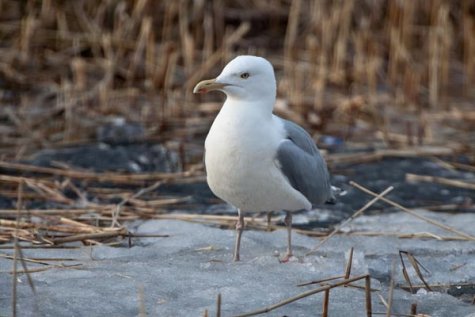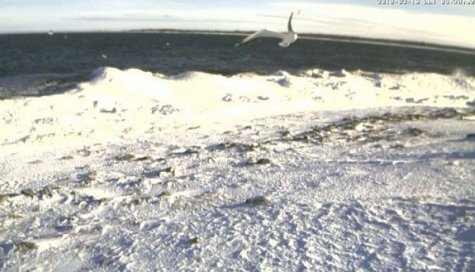Open water and herring gulls
Photo: Arne Ader
Translation: Liis
Herring gull.
|
Herring gull |
Hõbekajakas |
Larus argentatus |
The ice from the cold nights was swept away from the Vilsandi monitoring camera by the rise in seawater level that the westerly winds brought about. The gulls were immediately there: let’s see which ones.
The herring gulls and mew or common gulls quite often move together at open waters, but the number of herring gulls is much greater. In March they begin choosing partners, and in April nesting starts.
A look at the plumage of herring gulls: an adult bird – four years old or more –already has all the beautiful characteristics of its species, whereas the plumage of the first winter juveniles is brown-speckled all over, and that of the second winter ones is a pale grey „overcoat” with variegated flecks.
The flight image is calm, with steady wing beats; circling above the sea, they use the rising air flows. They are good swimmers, and can dive if needed. On land they move easily, even running at need.
- only the black-backed gull, with its dark coat, is larger than the herring gull; it is our largest gull.
- ships are accompanied by mew gulls – very similar to herrring gulls, but smaller and without the red patch on the beak.










